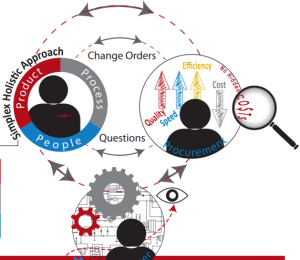“If you don’t distinguish yourself from the crowd, you will just be the crowd.” Rebecca Mark
What makes your company, service, or product unique? How do you stand out from your competition?
A unique selling proposition (USP) is the unique benefit exhibited by a company, service, product or brand that enables it to stand out from competitors. A USP should highlight benefits that are meaningful to consumers/clients and address their pain points.
USPs are important as a key element of establishing your brand identity and crafting your advertising messages. Therefore, if you do not have a USP, or are unsatisfied with the one you do have, it is well worth the effort to create one.
The first step to developing your USP is to answer three key questions:
1. What are your company’s features and benefits?
When was the last time you reviewed the features and benefits of your company, services, or product? Be sure to examine things such as your quality control process, rate of return, and production errors. Identify where you score high (and low!).
Also, look at your mission and vision statements, your company promise or guarantee, and your company culture statements to help define your features and benefits.
What about your sales process? Is it unique? To find out, sit down with some of your prospects and clients. Talk them through your sale process and post-sale follow-up. Use an infographic as a tool to elicit feedback.
As an example, consider this infographic from one of our clients – Simplex System Controls:
“At Simplex System Controls, our experts can spot issues BEFORE the quote is issued, ensuring it is as accurate and transparent as possible. Our quote includes all items necessary for the panel to function properly, saving you production delays and hidden costs.”
As a final step, send your list of identified features and benefits to your clients and gather their input? Do they agree with your list? Disagree? What other items would they add?
If you are not experienced with surveys and need the help of a professional, reach out to two or three happy clients and ask them for a recommendation.
2. What differentiates your company from your competitors?
Research your competitors, what do you offer in both product quality and service that your competitors do not provide.
Be specific in the list you create. For example, stating that you offer “great customer service” can have various meanings. Describe the services and policies you have in place.
For example, one of our clients, Simplex System Controls, offers an assigned project manager to each client who is then available for questions and progress reports. Their clients never get bounced between departments. They call this, “The Ease of Doing Business with Simplex.”
- We understand that engineers are overworked! At Simplex System Controls, giving you the best possible experience is our top priority. From the moment your order is placed, one of our project managers will be devoted to meeting your needs quickly and easily through a single point of contact. Using our detailed project management system, JobBoss, they can even begin your build while final details are still being decided! Your personal project manager will be available for the duration of your build and will follow-up upon delivery of the control panel to confirm your successful launch. There is nothing we enjoy more than another satisfied Simplex customer!
3. What is important to your potential and current clients?
What are the pain points of your target market? A pain point is an emotion someone feels when they think of a specific need, problem, weakness, struggle, or an unfulfilled desire for which they do not have a solution.
The best way to uncover these points is to ask both your current and prospective clients. Consider interviewing someone who represents your “ideal client” regarding their pain points. You may be pleasantly surprised to discover that this person will decide to become your next client.
This has been the case for my company – NWI Business Solutions. I believe that this type of conversation immediately builds trust, as they envision buying from you, and are impressed that you are focusing on their challenges.
Putting it all together
Use your customer and prospect’s pain points to help develop your USP, In your statement, use your identified differentiators and address the most significant pain points that you uncovered in your research.
Consider the following examples:
Pain Point: On-time delivery
USP: 95 % of your delivery dates are met
Pain Point: Faulty products
USP: “Simplex control panels commission cleanly in the field.” Simplex System Controls
Pain Point: Competitive pricing
USP: “We seamlessly provide quality products you can trust at a fair price.” Simplex System Controls
Pain Point: Need for research and development
USP: “From design to production – a partner you can trust” Integrity Manufacturing
Pain Point: Need for custom solutions
USP: “Product development and innovative solutions to meet customer’s needs.” Aurora Specialty Textiles Group, Inc.
You will know that you have created a great USP when you show it to your past clients and ask for feedback. Be sure to ask if you have touched on their pain points.
Need more help creating your USP? Contact us at NWI Business Solutions for a free USP worksheet or a complimentary 20-minute consultation with a team member.


Recent Comments